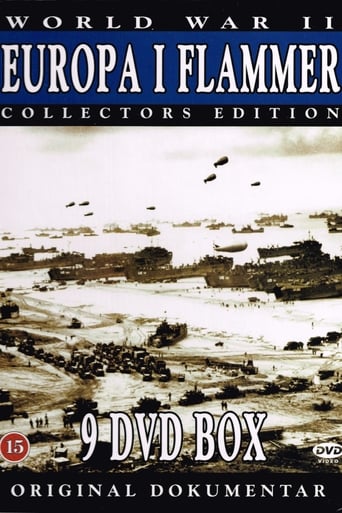Crusade in Europe (1949)
Seasons & Episode

The surrender at Reims ended the major phase of the European Theater of WWII. The film dissolves from the surrender to Hitler in his early years of power, follows the rise of Nazism through the Munich Pact, the attack on Poland, the fall of France, and the Battle of Britain.

The draft law of 1940 is passed and American men are inducted into the Army. Large-scale maneuvers are held in 1941. Pearl Harbor is bombed and Franklin Roosevelt asks Congress for a declaration of war.

President Roosevelt lectures Americans on their conduct. Churchill visits the U.S. American troops are deployed in England, and Eisenhower gets command of the European Theater of Operations.

Americans arrive in Britain, try to get along with British civilians, and are made ready physically and mentally to fight the Germans. The Eighth Air Force begins its bombing offensive, and the decision is made to invade French North Africa.

The troops of Operation Torch come from the U.S. and Britain. U.S. industry is shown going to full war production. Equipment is shown being loaded up for transport to North Africa, and the landings are made successfully.

Eisenhower has to deal with keeping the French in North Africa from causing trouble in the American rear, while at the same time advancing into Tunisia to destroy the Afrika Korps. The Casablanca Conference is shown.

Eisenhower describes how the Allies squeezed Rommel's forces in Tunisia. The Afrika Korps attacks to the Kasserine Pass but is pushed back thanks to Patton. Allied air power helps win the day, the U.S. and British 8th armies meet, and Tunis falls.

The decision is made at Casablanca to invade Sicily. Pantelleria is bombed and surrenders. The invasion convoys come after an airborne drop, and after a major storm. The landings are made and counterattacks weathered. Sicily is conquered by August 17th, 1943.

General Montgomery attacks Italy across the Strait of Messina. A landing is made at Salerno to coincide with Italy's surrender, after Italy's fleet surrenders at Malta. The Germans resist the Salerno landing strongly. After 7 days the Allies manage to push back the enemy and link up with British forces coming from the south. FDR, Churchill and Chiang Kai-Shek meet in Cairo.

The Italian Campaign was termed by most G.I.'s as the toughest campaign in the European Theater. A G.I., now in a veteran's hospital, reminisces over scenes of the Italian Campaign. on the elements which made it such a tough fight.

Eisenhower inspects the landing beaches and we see the "Mulberry" harbors put in place along the Normandy beaches. Airfields are built and supplies offloaded. V-1 rockets attack London. We see Germans build the V-2 rockets. Storms wreck a Mulberry harbor and damage the other. Cherbourg is taken, but is wrecked by the Germans. The British and Canadians work to take Caen. Operation Cobra is launched to break out of Normandy.

The opening shows the American capture of Strasbourg from the Germans, followed by the leave facilities for American servicemen. Hitler is shown with General Jodl planning the Battle of the Bulge. The German attack is a surprise blow, which the Allies turn back by pushing the enemy back to his starting point.

The Allies cross the Rhine River into Germany in the early part of 1945. The Canadians cross in February, followed by the Americans and British, with the Americans taking Cologne and crossing the river at Remagen. Winston Churchill visits the front and crosses the river himself in a landing boat.

The Western Allies entrap a large part of the German Army in the Ruhr Pocket, and captures some 325,000 enemy soldiers. The Americans and Russians meet at Torgau on the Elbe River. The Russians take Berlin, and German forces surrender in Europe and Italy. Eisenhower also inspects a concentration camp.

This installment talks about the lesson learned, military and diplomatic, about coalition warfare. It includes a reenactment of the Alamogordo atomic bomb test, as well as its use against Japan.

The post-war government of Germany is shown. The U.S. in Cologne puts things in order. The Potsdam Conference and Nuremberg War Crimes Trials are shown.
Watch Trailer
Free Trial Channels























